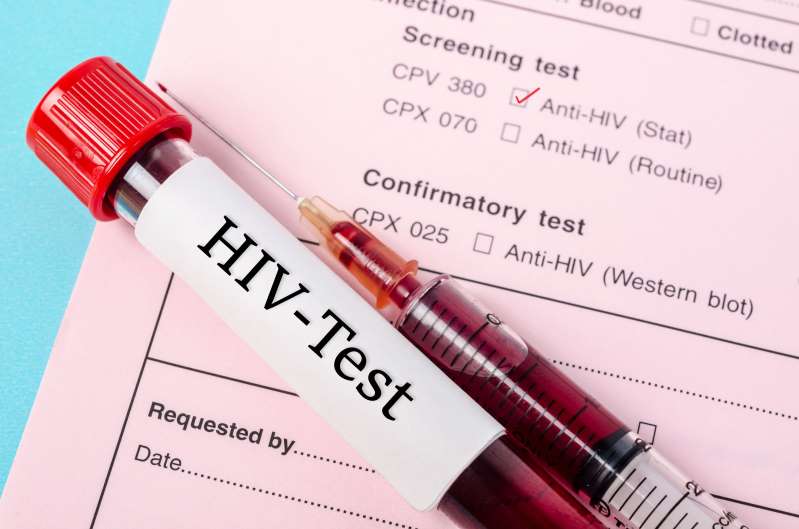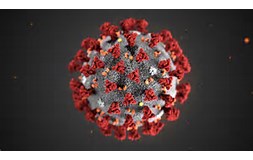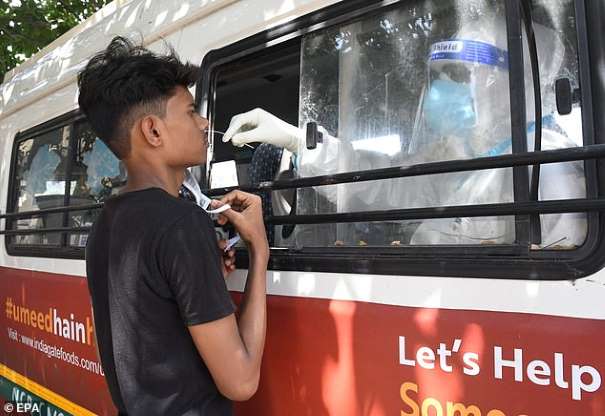Woman's immune system may have cured her of HIV without stem cell transplant, study suggests













Woman's immune system may have cured her of HIV without stem cell transplant, study suggests
Woman's immune system may have cured her of HIV without stem cell transplant, study suggestsWoman's immune system may have cured her of HIV without stem cell transplant, study suggests Alexandra Thompson 15 hrs ago;
A screenshot of a cell phone: Sample blood collection tube with HIV test label on HIV infection screening test form.Sample blood collection tube with HIV test label on HIV infection screening test form.A woman may be the first person to be cured of human immunodeficiency virus (HIV) without enduring a gruelling bone marrow transplant, research suggests.
Loreen Willenberg, 66, from California, was infected with the sexually-transmitted virus in 1992.
An “elite controller”, Willenberg is one of the less than 0.5% of patients whose immune system can suppress the infection without antiretroviral therapy (ART) drugs.
HIV typically lies dormant in cells where it cannot be wiped out by medication or the immune system. ART helps to suppress the virus, but it reactivates if a patient stops taking the therapy.The unnamed “Berlin patient” was the first to be “cured” of HIV following a stem cell transplant. This was later replicated in Adam Castillejo, “the London patient”.

Read more:Doctors 'not convinced' HIV patient cured by antiviral drugs and B vitamin
Castillejo had the transplant as a last resort and it led to him enduring multiple infections, hearing loss and mouth ulcers so severe he was barely able to take his medication.
Willenberg is well known among HIV specialists after she was found to suppress the virus decades after diagnosis. After looking at 1.5 billion of Willenberg’s blood cells, scientists from Massachusetts General Hospital found no trace of the virus, despite her not being on ART.One expert said she “could be added to the list of what I think is a cure”, however, another stressed more evidence is required.Elite controllers are ‘highly atypical’The Massachusetts scientists looked at 64 elite controllers, as well as 41 patients on ART.
“Unlike ART-treated individuals, elite controllers’ viral reservoirs appear to be incapable of being reactivated,” they wrote. “This likely helps the elite controllers maintain spontaneous, drug-free control of HIV and may represent a distinguishing feature for a functional cure of HIV infection.”Upon infection, HIV replicates its genetic material into a patient’s cell, creating viral reservoirs where it can persist.
If a complete copy of the virus is incorporated into a cell’s genetic material, it can create new copies of HIV. This is suppressed by ART, however, if a patient stops taking the therapy, the HIV copies replicate. The reservoirs are therefore considered a major obstacle to a cure.
In elite controllers, however, the patient’s immune system controls the virus without ART, to the point where the virus is completely undetectable. Better understanding of how their immune systems achieve this could one day lead to a cure, eliminating the need for daily ART, according to the scientists.
The therapy has been linked to fractures, central nervous system disorders and heart disease, to name a few complications.To learn more about elite controllers, the scientists mapped the viral reservoirs of the 64 participants.
They found the patients’ HIV was often in so-called gene deserts; inactive parts of a human’s genetic material where DNA is never “turned on” and HIV cannot be expressed.
This “locks” HIV in a cell’s DNA, where it is unable to create copies.
“This positioning of viral genomes in elite controllers is highly atypical, as in the vast majority of people living with HIV, HIV is located in the active human genes where viruses can be readily produced,” said lead author Dr Xu Yu.‘Added to the list of what I think is a cure’In a second part of the experiment, the scientists collected cells from the elite controllers, before infecting them with HIV in the laboratory.
Results – published in the journal Nature – suggest the virus integrated into active sites in the cell’s genetic material, not the gene deserts. This implies the elite controllers’ unique virus response may be a result of their immune system eliminating viral DNA from the active sites of a cell.
The scientists were particularly taken aback by Willenberg, who had no intact HIV in more than 1.5 billion cells. Millions of cells from her gut, rectum and intestine also showed no signs of the virus. The scientists wrote this “raises the possibility that a sterilising cure of HIV infection, which has previously been observed only following allogeneic haematopoietic stem cell transplantation, may be feasible in rare instances”.
Willenberg has been studied by scientists for more 15 years. With the exception of one test several years ago that detected a small amount of the virus, researchers have never identified HIV in her tissues. “She could be added to the list of what I think is a cure, through a very different path,” Dr Sharon Lewin from the Peter Doherty Institute for Infection and Immunity in Melbourne told The New York Times.
She stressed Willenberg’s immune response is unique, however, adding: “The real challenge, of course, is how you can intervene to make this relevant to the 37 million people living with HIV.”
Another expert was more skeptical.
“I need to see more before I would say, ‘Oh, she’s cured’,” said Dr Una O’Doherty from the University of Pennsylvania. This is not the first time a study has suggested an HIV patient was cured without a stem cell transplant. In July, medics from the University of São Paulo claimed a man showed no sign of the virus after taking a cocktail of antiviral drugs and a B vitamin. Other experts, however, were "not convinced".
Is HIV considered curable?
Although HIV is generally considered incurable, a daily dose of ART enables patients to live “longer, healthier” lives, while reducing the risk they will pass the virus on via unprotected sex. The goal of the therapy is to lower a patient’s viral load to an undetectable level, meaning the quantity of the virus in their blood is too low to be picked up in a test.
These patients have “effectively no risk of transmitting HIV to their HIV-negative partners through sex”. HIV damages immune cells, preventing them from fighting off everyday infections, like colds.
Nearly all (97%) patients on antiretroviral therapy in the UK are “[HIV] virally suppressed”.
Left untreated, HIV can develop into acquired immune deficiency syndrome (Aids). This occurs when the immune system is so severely damaged, the patient is at risk of life-threatening infections and diseases.
A stem cell transplant has therefore been suggested for patients requiring a “last resort”.
Reference: Yahoo News: Alexandra Thompson 15 hrs ago: 27th August 20220
India sees record rise of more than 75,000 daily coronavirus cases









India sees record rise of more than 75,000 daily coronavirus casesIndia sees record rise of more than 75,000 daily coronavirus cases
India today saw a record rise of more than 75,000 new cases of coronavirus and its death toll from the disease passed 60,000.India today saw a record rise of more than 75,000 new cases of coronavirus and its death toll from the disease passed 60,000.
The number of infections was 75,760 on Thursday, a jump of 4,000 infections on the previous record, taking its total number of cases since the pandemic started to more than 3 million.
The death toll 60,472, increased by 1,023 - a slight drop on yesterday's fatalities.
The dire state of the pandemic comes as millions of residents in the east of the country are battling monsoon rains, with an orange alert out in Uttarakhand and Uttar Pradesh.Bihar, one of the rural states affected by flooding, is seeing rising numbers due to villagers who have moved back to their homes after the pandemic took jobs away in the cities.
There are very few hospitals or doctors in the state - less than one medic per 1,000 people - and there are huge concerns its health infrastructure could rapidly become overwhelmed.
The local administration has even invested in a boat ambulance to ferry people to hospital through the floodwaters.

Calcutta, in West Bengal, went back under strict lockdown as a result of the surging caseload today. All public transport, offices, banks and other all but essential businesses were closed down.
Flights in and out of the city were cancelled for the day and train services were diverted. But amid renewed local lockdowns, more than two million Indian pupils will sit admissions tests for medical and engineering colleges next week, the government announced on Wednesday.
'We are very mindful of the safety of our students, we will take full precautions,' Education Minister Ramesh Pokhriyal told state radio, adding that the tests had to be held to ensure students did not lose a year.
Already twice postponed this year, the tests will be spread over several days and held at more centres than usual, to ensure there is no crowding.
But many students have to travel long distances and there was a risk of infections, said the All-India Students' Union, a leftist group that represents university students.
It urged students to wear black armbands and join online protests to put pressure on the government to delay the tests until infections fall.
Swedish climate activist Greta Thurnberg also waded into the dispute, urging a postponement.
'It´s deeply unfair that students of India are asked to sit national exams during the COVID-19 pandemic and while millions have also been impacted by the extreme floods,' Thurnberg said on Twitter on Tuesday.
India, the world's second-most populous country, has posted the highest single-day caseload in the world every day since August 7.
Reference: Daily Mail: Ross Ibbetson For Mailonline 13 hrs ago: 28th August 2020
Coronavirus: Texas health officials issue warning after spike in people ingesting bleach to treat disease












Coronavirus: Texas health officials issue warning after spike in people ingesting bleach to treat disease
Health officials in Texas have repeated calls for residents not to use bleach to treat or prevent Covid-19 after a spike in people ingesting harmful chemicals.Health officials in Texas have repeated calls for residents not to use bleach to treat or prevent Covid-19 after a spike in people ingesting harmful chemicals.
Cristina Holloway, public health education manager at North Texas Poison Center (TCPN), said the service had received 46 calls in August relating to bleach incidents. Some of those calls involved people having drunk bleach and citing coronavirus as the reason why they had done so, Ms Holloway said.
“We certainly are not used to seeing bleach ingestion, at least that frequently in such a short amount of time, and we do know in general this year compared to last we’re seeing a whole lot more of bleach exposures,” Cristina Holloway, the public health education manager at North Texas Poison Center, told NBC on Monday.Ms Holloway blamed the media and misinformation on the internet for the spike in bleach incidents.

Most of the cases were not severe, although 12 required medical attention, Ms Holloway added.Health officials in Texas have repeated calls for residents not to use bleach to treat or prevent Covid-19 after a spike in people ingesting harmful chemicals.
Cristina Holloway, public health education manager at North Texas Poison Center (TCPN), said the service had received 46 calls in August relating to bleach incidents.
Some of those calls involved people having drunk bleach and citing coronavirus as the reason why they had done so, Ms Holloway said. “We certainly are not used to seeing bleach ingestion, at least that frequently in such a short amount of time, and we do know in general this year compared to last we’re seeing a whole lot more of bleach exposures,” Cristina Holloway, the public health education manager at North Texas Poison Center, told NBC on Monday. Ms Holloway blamed the media and misinformation on the internet for the spike in bleach incidents.
Most of the cases were not severe, although 12 required medical attention, Ms Holloway added.
A man wearing a suit and tie: image© Provided by The Independent imageRead moreTrump denies responsibility for people drinking bleach“We do know that there’s a lot of misinformation through the media, through the internet, so that can also be a contributing factor where people are misinformed and hear it from a neighbor or a friend and think it sounds like a good idea when it could potentially be dangerous,” she said.
She also claimed that increased cleaning routines in homes during the pandemic was a factor in the rising number of bleach-related incidents.
“We do know that more people are using these products more than ever before and typically when we have more of those products, using products, we see more exposure, more accidents will happen,” Ms Holloway said.
TCPN issued a statement this week in which it urged Texans to read the instructions on bleach and cleaning products before use.The statement said there has been a 71 per cent increase in bleach related incidents and a 63 per cent increase in household cleaning product incidents.
The statement did not clarify in which period it had recorded the increasing number of bleach-related incidents. It did not directly advise Texans not to drink bleach, despite Ms Holloway confirming there had been a rise in ingestion of the chemical.
In April this year, president Trump was lambasted by the medical community after suggesting research into whether coronavirus might be treated by injecting disinfectant into the body. He also appeared to propose irradiating patients’ bodies with UV light, an idea dismissed by a doctor at the briefing.
Mr Trump has also repeatedly endorsed hydroxychloroquine, an anti-malaria drug that has not been proven to be an effective drug in treating coronavirus patients.
Reference: Independent: Matt Mathers 2 days ago: 26th August 20202
Usain Bolt tests positive for coronavirus as police launch probe into birthday party











Usain Bolt tests positive for coronavirus as police launch probe into birthday party
Usain Bolt has tested positive for coronavirus less than a week after his controversial birthday party which is now under investigation from the police.Usain Bolt has tested positive for coronavirus less than a week after his controversial birthday party which is now under investigation from the police.
The eight-time Olympic gold medallist was thrown a surprise celebratory bash in his native Jamaica on Friday in honour of his 34th birthday.
There is currently a rule in place in Jamaica which prohibits more than 20 people gathering at one time.

Bolt's party appeared to exceed that number while guests failed to adhere to social distancing guidelines or wear face masks.
Following the celebration, which was arranged by Bolt's girlfriend Kasi Bennett, the former sprint athlete revealed he had taken a coronavirus test before isolating."I did a test on Saturday, because I have work," Bolt said. "I'm trying to be responsible, so I'm gonna stay in and stay here for my friends."
But his efforts to avoid Covid-19 were to no avail after his agent Ricky Simms revealed he had returned a positive result.
Simms told CNN: "The Covid test was positive, but Usain is not showing any symptoms."Police in Jamaica have now launched a probe into Bolt's party, as confirmed by the nation's Prime Minister Andrew Holness.
"These matters are all being thoroughly investigated and the police will give a report on these matters in near future," Holness said.
Bolt was seen dancing with fellow revellers at the party as well as washing his hands and face with champagne.Man City and England footballer Raheem Sterling was also present but has since returned a negative coronavirus test.
Sterling will be relieved he has not contracted the virus, particularly as he was named in the England squad for their upcoming Nations League fixtures, for which he is due to report for training on Monday.
Bolt meanwhile hung up his spikes in 2017, and has now also given up hope of forging a football career of his own after failing to make the grade at Australian club Central Coast Mariners.
Reference: Mirror: Darren Wells 5 hrs ago: 26/08/2020
Articles - Most Read
- Home
- LIVER DIS-EASE AND GALL BLADDER DIS-EASE
- Contacts
- African Wholistics - Medicines, Machines and Ignorance
- African Wholistics -The Overlooked Revolution
- African Holistics - Seduced by Ignorance and Research
- The Children of the Sun-3
- Kidney Stones-African Holistic Health
- The Serpent and the RainBow-The Jaguar - 2
- PART ONE: DIS-EASE TREATMENT AND HEALTH-3
- 'Tortured' and shackled pupils freed from Nigerian Islamic school
- King Leopold's Ghost - Introduction
- PART ONE: DIS-EASE TREATMENT AND HEALTH-4
- PART ONE: DIS-EASE TREATMENT AND HEALTH-2
- PART ONE: DIS-EASE TREATMENT AND HEALTH-5
- African Wholistics - Medicine
- Menopause
- The Black Pharaohs Nubian Pharaohs of Ancient Egypt
- The Mystery System
- PART ONE: DIS-EASE TREATMENT AND HEALTH-6
Who's On Line?
We have 120 guests and no members online
Ad Agency Remote
Articles - Latest
- The Male G Spot Is Real—and It's the Secret to an Unbelievable Orgasm
- Herbs for Parasitic Infections
- Vaginal Care - From Pubes to Lubes: 8 Ways to Keep Your Vagina Happy
- 5 Negative Side Effects Of Anal Sex
- Your Herbs and Spices Might Contain Arsenic, Cadmium, and Lead
- Struggling COVID-19 Vaccines From AstraZeneca, BioNTech/Pfizer, Moderna Cut Incidence Of Arterial Thromboses That Cause Heart Attacks, Strokes, British Study Shows
- Cartilage comfort - Natural Solutions
- Stop Overthinking Now: 18 Ways to Control Your Mind Again
- Groundbreaking method profiles gene activity in the living brain
- Top 5 health benefits of quinoa
- Chromolaena odorata - Jackanna Bush
- Quickly Drain You Lymph System Using Theses Simple Techniques to Boost Immunity and Remove Toxins
- Doctors from Nigeria 'facing exploitation' in UK
- Amaranth, callaloo, bayam, chauli
- 9 Impressive Benefits of Horsetail
- Collagen The Age-Defying Secret Of The Stars + Popular Products in 2025
- Sarcopenia With Aging
- How to Travel as a Senior (20 Simple Tips)
- Everything you need to know about mangosteen
